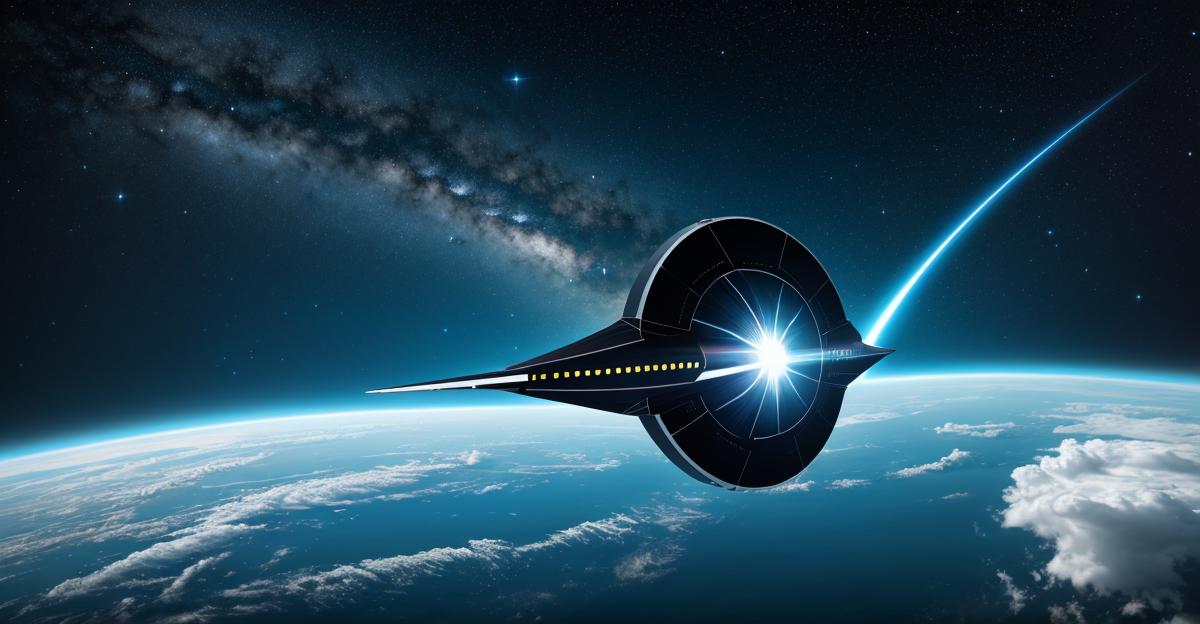
Alright, space cadets, prepare for launch! We’re diving into the theoretical realm of warp drives – a concept that may sound like pure science fiction, but is surprisingly grounded in real physics. We’ll explore the dazzling possibilities, the monumental challenges, and the cutting-edge research that *just might* one day turn interstellar travel into reality. ### The Alcubierre Drive: Riding a Spacetime Wave The idea of a warp drive, so beloved in science fiction, gained scientific legitimacy with Miguel Alcubierre’s groundbreaking work in 1994. He proposed a theoretical solution to Einstein’s field equations, the Alcubierre metric, describing a spacetime where a spacecraft could travel faster than light *without* locally exceeding the speed of light. Sound confusing? Let’s unpack it. The Alcubierre drive essentially creates a “bubble” around a spacecraft. This bubble compresses spacetime in front of the craft and expands it behind. Think of it as a cosmic surfboard: the surfer isn’t moving faster than the water, but is carried by the wave. Similarly, the spacecraft stays stationary *within* the warp bubble, while the bubble itself is what moves through spacetime. Imagine an escalator for the universe! This allows for effective faster-than-light travel because it’s the *space* that’s moving, not the ship. ### The Causality Conundrum: Avoiding Time Travel Paradoxes Now, things get… complicated. Faster-than-light travel throws open a Pandora’s Box of paradoxes, especially concerning causality. Simply put, causality means that cause must come before effect. If we can travel faster than light, could we theoretically travel back in time and alter the past? This leads to head-scratching scenarios, like the grandfather paradox: if you travel back in time and prevent your grandparents from meeting, would you cease to exist? Physicists have proposed several theoretical solutions to these potential paradoxes. A leading idea is the Novikov self-consistency principle, which suggests the universe would somehow conspire to prevent causality violations. Basically, if you tried to change the past, something would inevitably happen to thwart your efforts. It’s like the universe has a built-in safety net. However, these are still just theories, and the question of causality remains a significant obstacle in warp drive development. ### The Energy Crisis: Exotic Matter and Negative Mass Here’s the truly mind-boggling part: creating an Alcubierre drive requires “exotic matter.” This isn’t your ordinary, run-of-the-mill stuff. Exotic matter would need to possess negative mass-energy density. Imagine negative gravity – instead of attracting objects, it would push them away. The catch? We’ve never observed exotic matter with negative mass-energy density in any substantial amount. Furthermore, the amount of exotic matter required to create even a tiny warp bubble is astronomical – potentially equivalent to the mass-energy of a planet or even a star! This violates what are known as energy conditions, fundamental principles in general relativity that govern the allowed distribution of energy and matter. Finding or creating such exotic matter is arguably the biggest hurdle to warp drive technology. ### Current Research and Potential Breakthroughs Despite these immense challenges, scientists haven’t abandoned the dream of faster-than-light travel. Research continues, exploring the possibilities of warp drives and seeking ways to overcome the current limitations. Some researchers are focusing on modeling and potentially creating miniature warp bubbles in the laboratory. These experiments, though in their infancy, aim to test the theoretical predictions of the Alcubierre metric and study the behavior of spacetime under extreme conditions. Others are investigating alternative theoretical approaches that might reduce the energy requirements or even eliminate the need for exotic matter altogether. For example, modified gravity theories, which propose adjustments to Einstein’s theory of general relativity, might offer new ways to manipulate spacetime without violating established energy conditions. The path to warp drive technology is undoubtedly long and difficult, but the potential rewards – interstellar travel and the exploration of the cosmos – are too compelling to ignore. What if a deeper understanding of quantum entanglement unlocks a pathway to manipulating spacetime? Or perhaps a revolutionary new source of energy will be discovered, making the creation of exotic matter a more realistic prospect? What do *you* think is the biggest obstacle to achieving warp drive technology, and what radical new discovery do you think is needed to overcome it? Share your thoughts in the comments below! Don’t forget to follow for more explorations into the fascinating world of science and technology!



